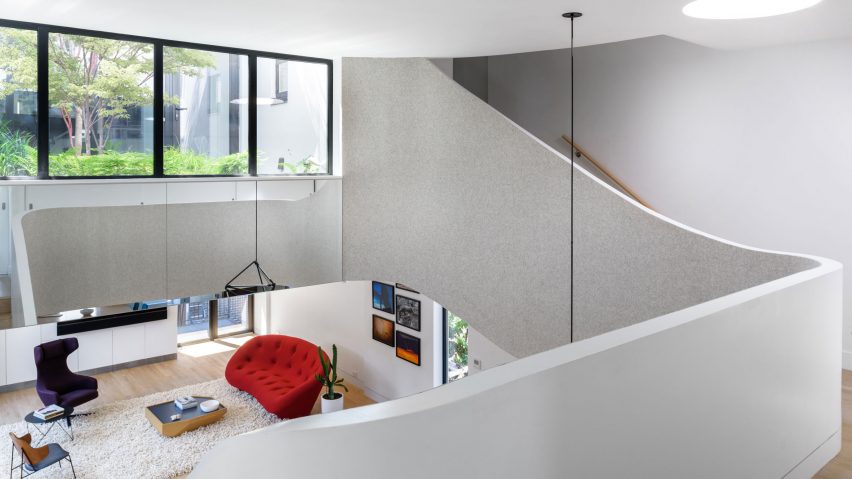
Young Projects extends brick townhouse in Brooklyn with metal-clad addition
Black zinc cladding and a sinuous staircase feature in the renovation and expansion of an urban masonry building by New York studio Young Projects.
The Wythe Corner House project involved the revamp of a mixed-use structure on a corner lot in Brooklyn's Williamsburg neighbourhood.
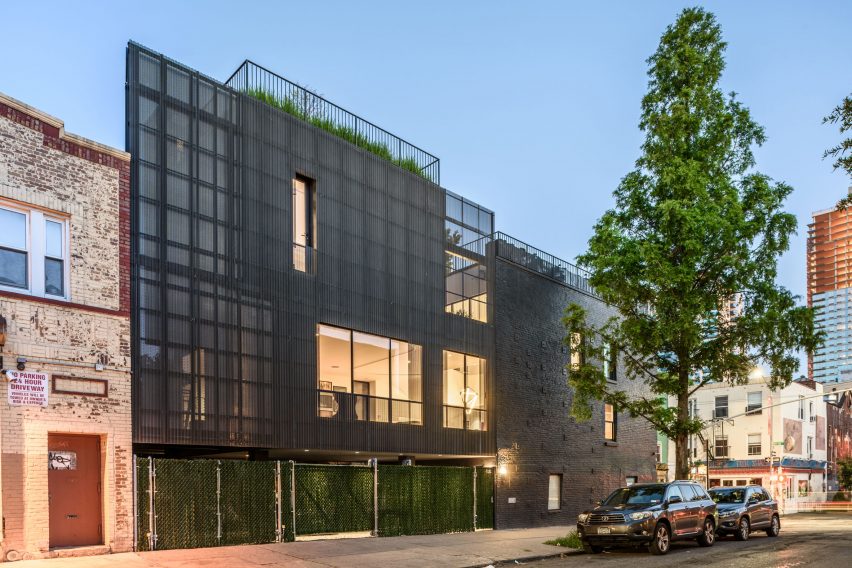
The firm re-designed the existing building and created an addition in a vacant rear yard.
The three-storey building – owned by a photographer and entrepreneur – contains commercial space on the ground level and a spacious apartment for the client up above.
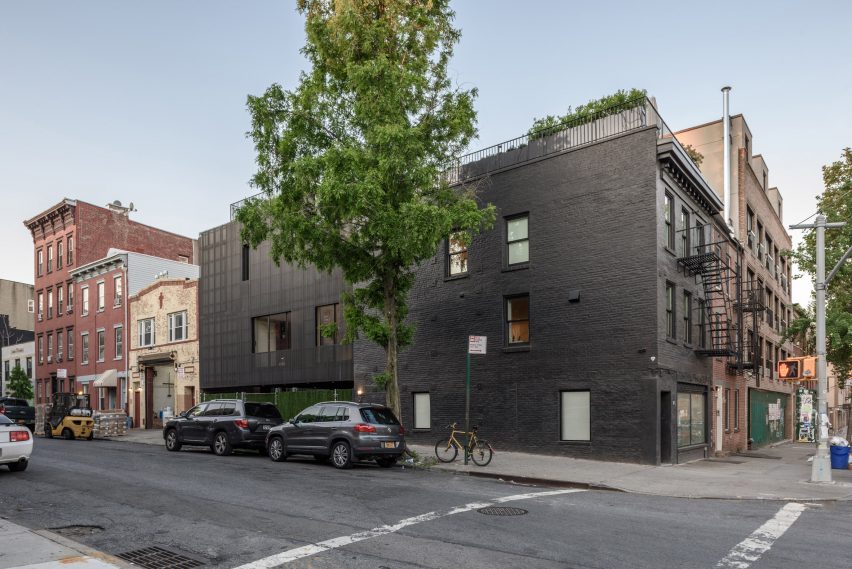
The new addition sits atop pilotis, with two parking spots and storage areas located below.
Elevating the extension reduced excavation and foundation work, in turn helping the firm adhere to the project's modest budget. It also resulted in a more distinctive building.
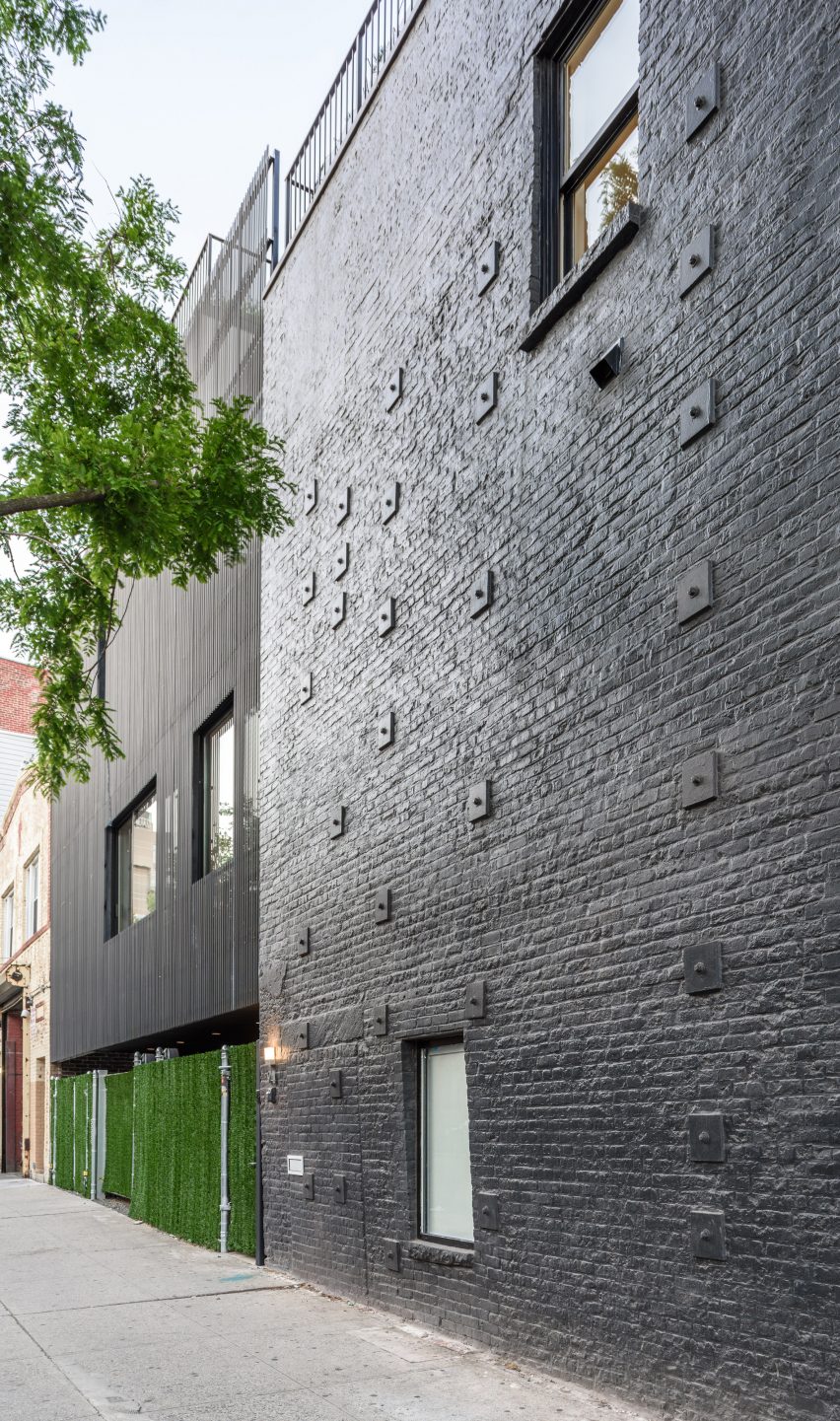
"Our solution proposed a new typology for the Brooklyn townhouse," said Young Projects, a New York-based studio.
"Rather than expanding directly back on the ground level or evenly on all three levels, we proposed lifting the expansion off the ground and reallocating all available square footage into two hovering volumes."
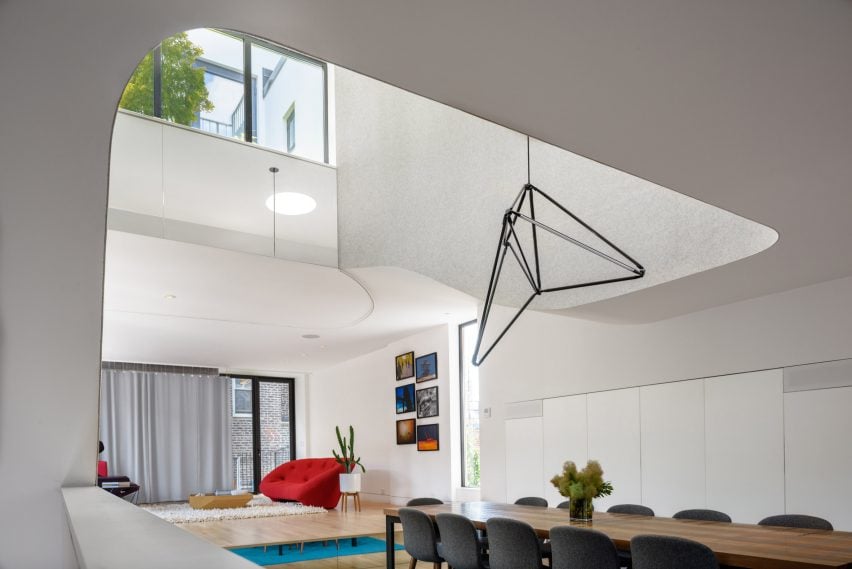
The addition is sheathed in a screen made of perforated and corrugated black zinc. The vertical strips that comprise the screen are meant to play off the horizontal banding of the masonry structure.
The screen is also intended to give the addition a unified look. "It serves as a visual veil that unifies the separate volumes of the extension and a central courtyard into one singular element, with varying degrees of transparency and opacity," the firm said.

Inside, the team sought to gently blend old and new, with a double-height space serving as a point of intersection. "The boundary between the existing structure and the new addition is more subtly expressed as both a line of connection and a line of dissonance," the architects said.
Bedrooms and an exterior courtyard were situated on the top storey, while the living room, kitchen and dining area were placed on the second level. "The second floor was extended to create one continuous living zone, sandwiched between sleeping above and working below," said Young Projects.

A sinuous staircase covered on the outside with grey felt winds up through the double-height space, and serves as a contrast to the orthogonal elements throughout the home.
The curves are repeated in a curtain track in the ceiling, which enables the living room to be partitioned into smaller spaces.
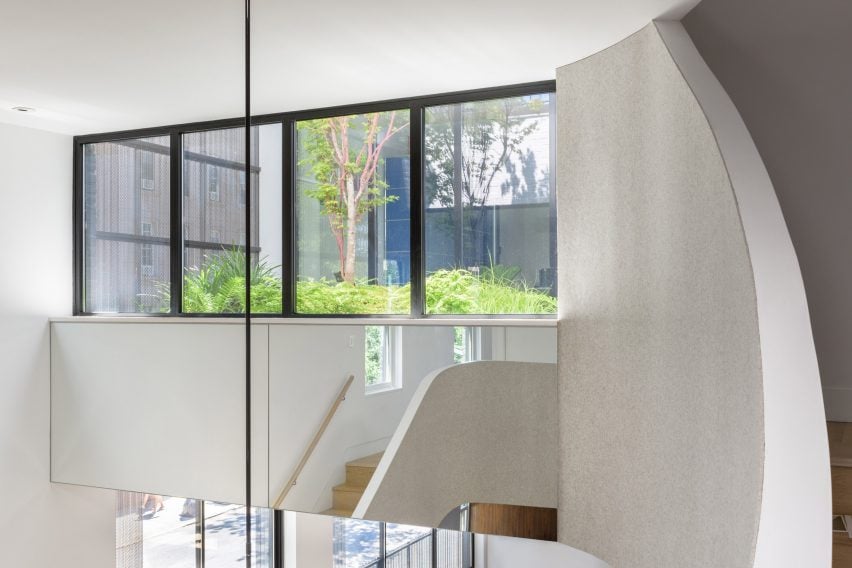
The curtain is made of the same grey felt that was used to wrap the half-walls enclosing the stair.
"When the felt curtain is completely opened, it meets up with the curve of the stair," the firm said. "In this configuration, the meandering curve extends throughout the open plan of the second floor and bridges both sides of the project."
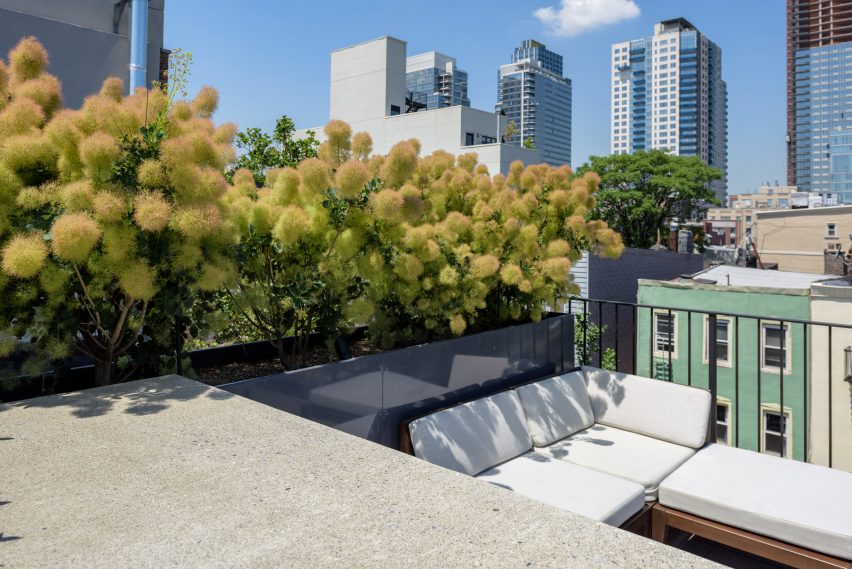
Atop the new addition is a rooftop garden, which allows for more sunlight and privacy than a street-level backyard. The outdoor space consists of multiple terraces and offers views of Manhattan.
Overall, the architects aspired to create a sense of "mystery and narrative" with the Wythe Corner House. "The section of the interior spaces is not what you would necessarily expect from seeing the street-side elevation of the building," the studio said.
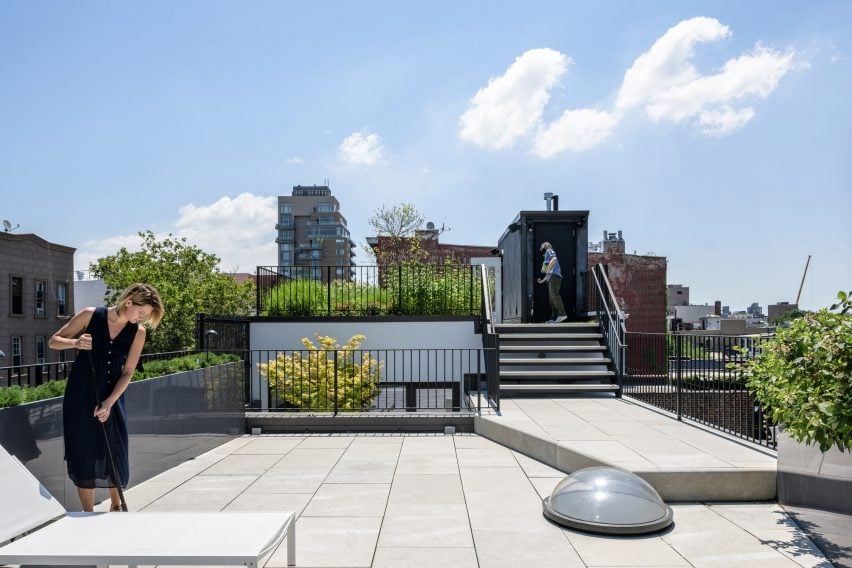
Other projects by Young Projects include a warming hut in Canada that consists of a fireplace set within a slatted wooden box.
Photography by Alan Tansey.
Project credits:
Architects: Young Projects
Landscape designer: Emily Bauer
Builder: Advanced Building Contractors